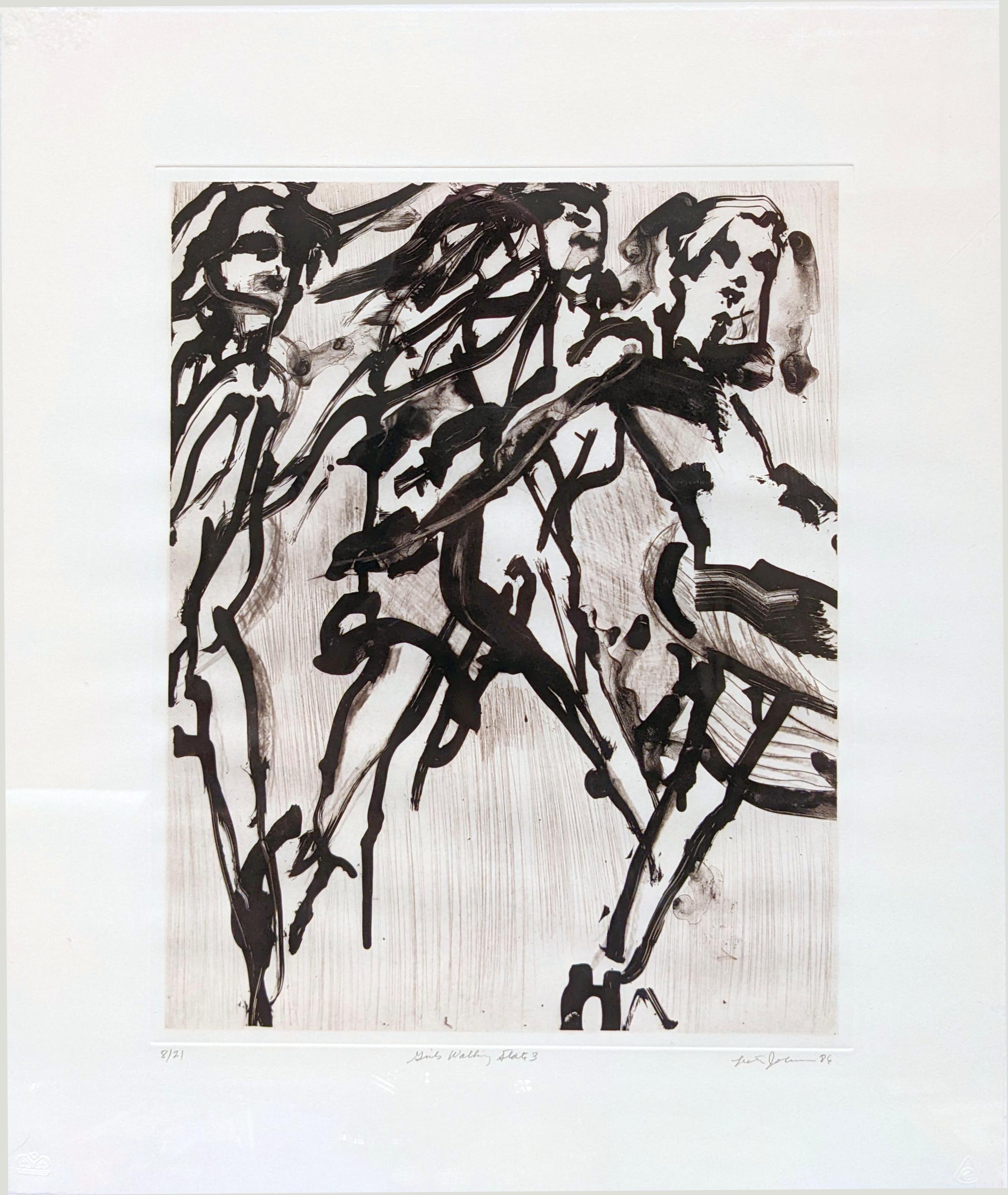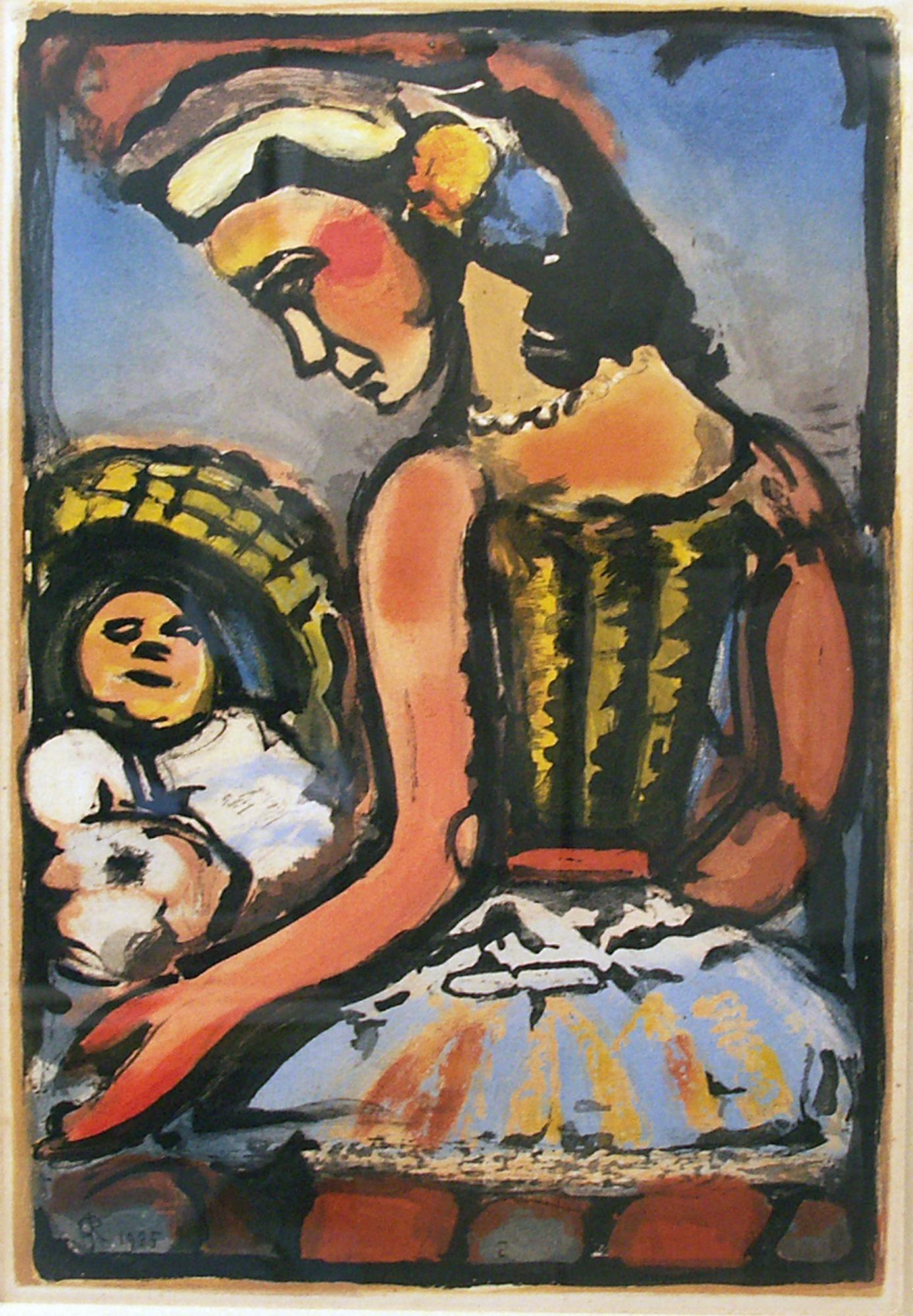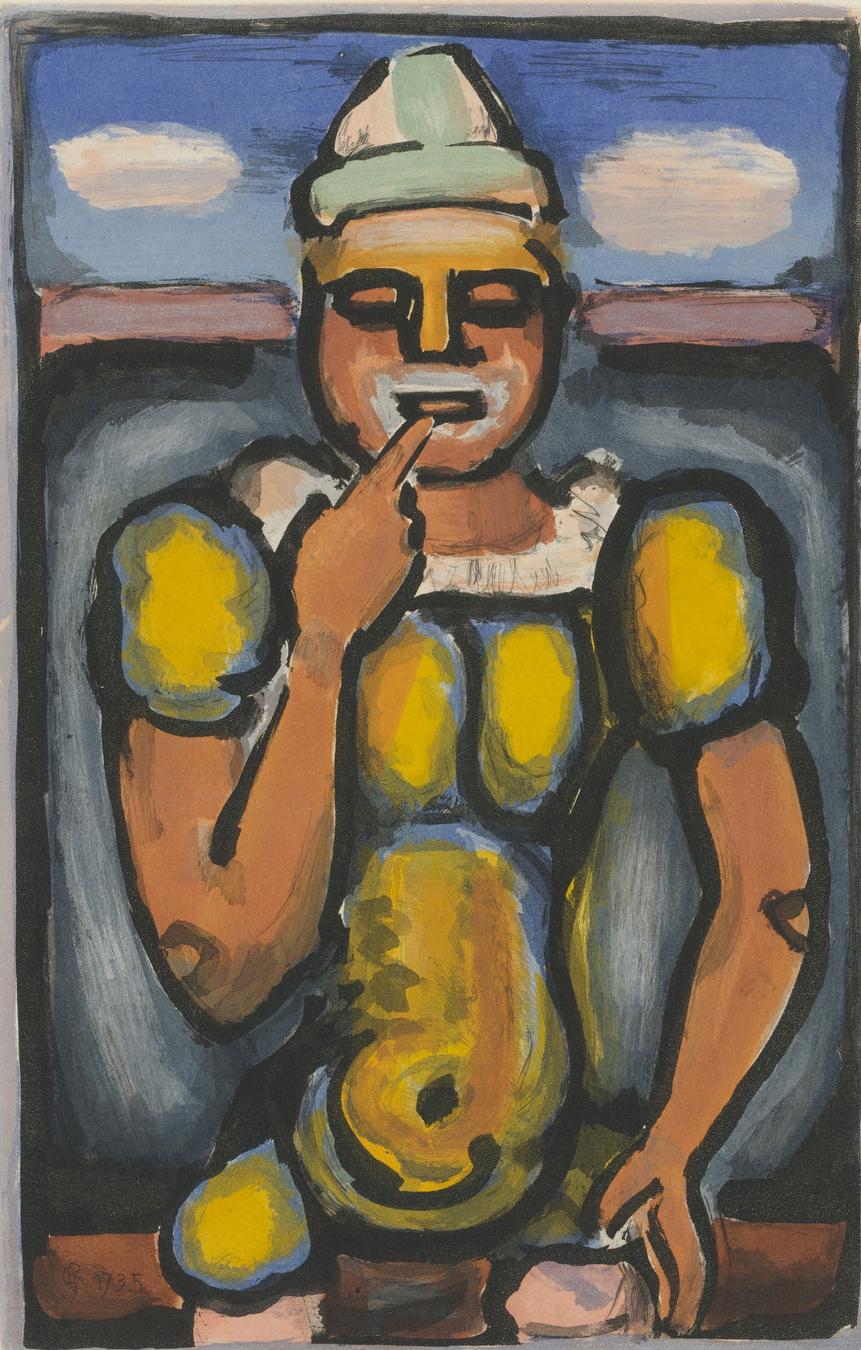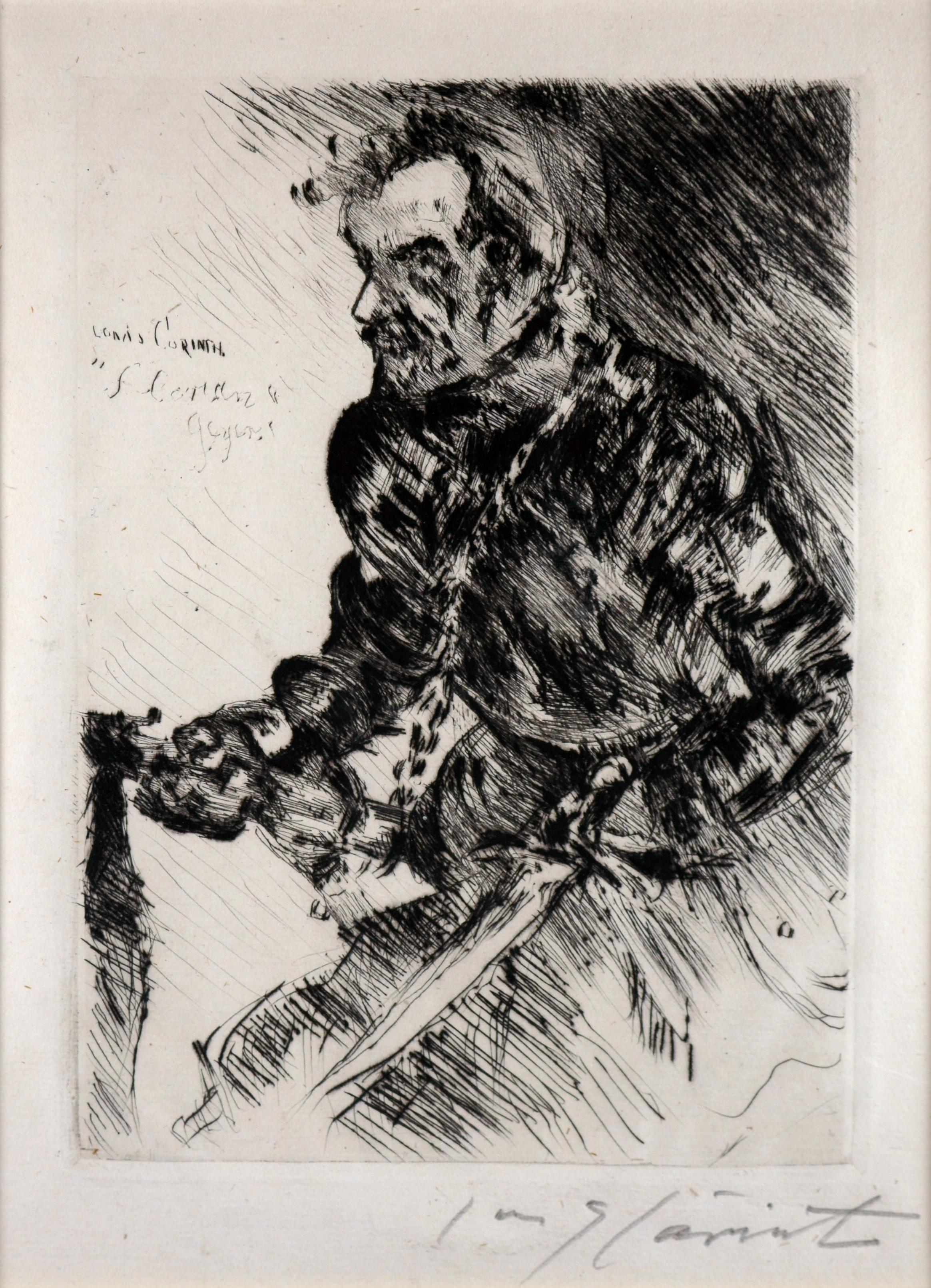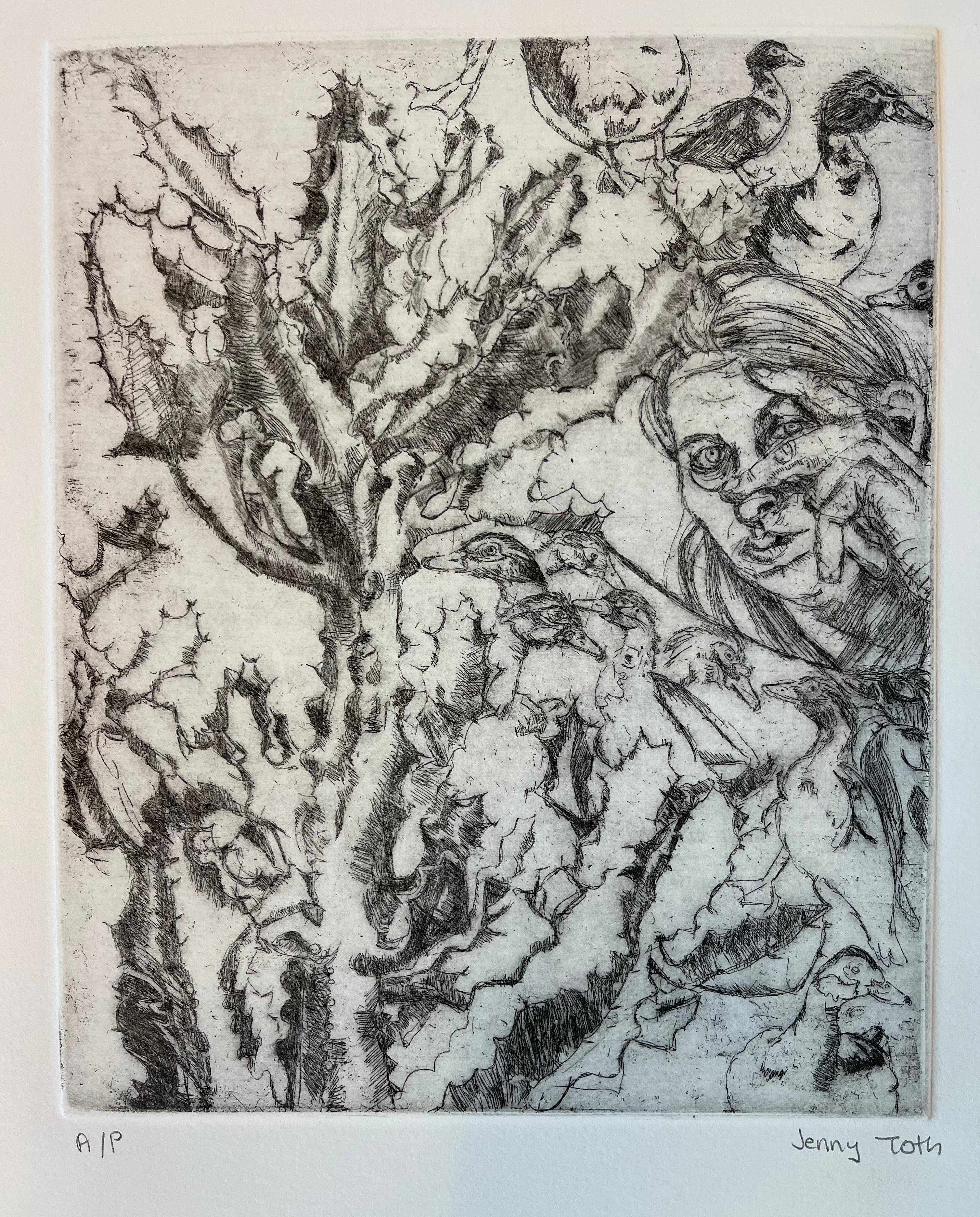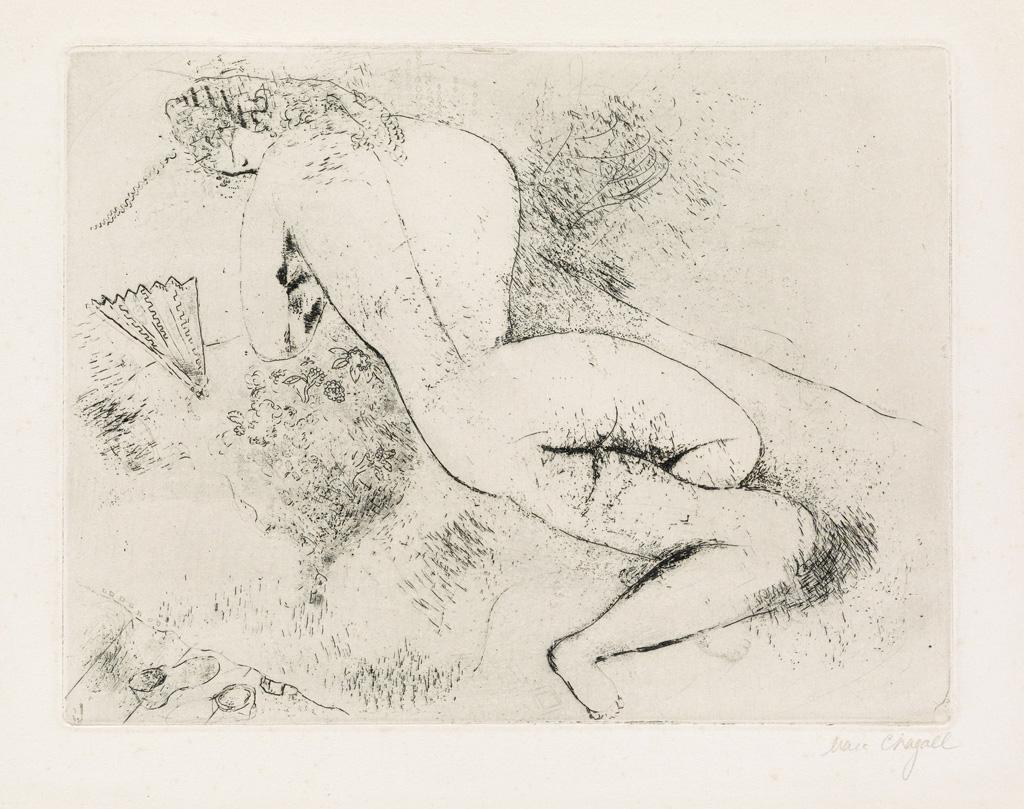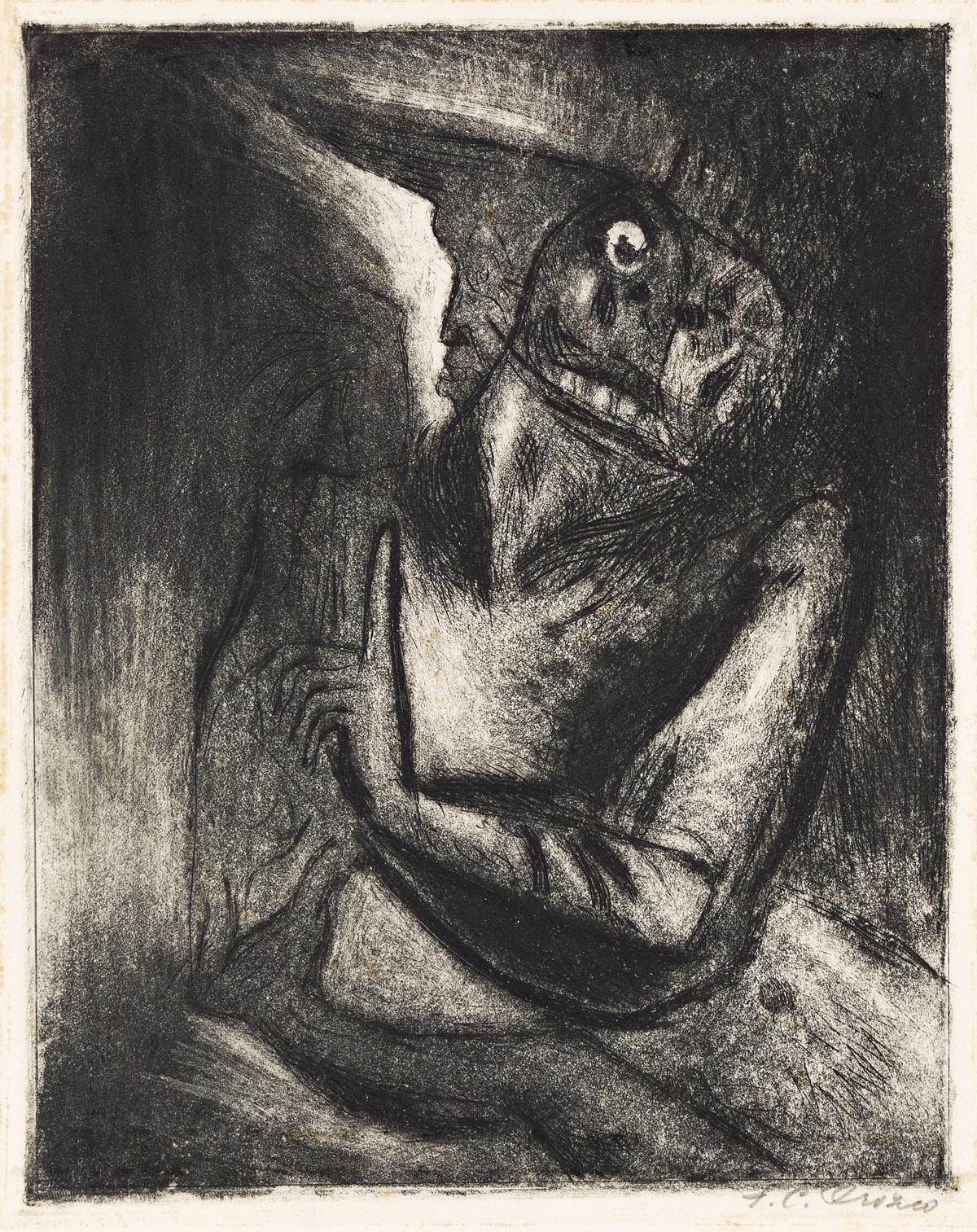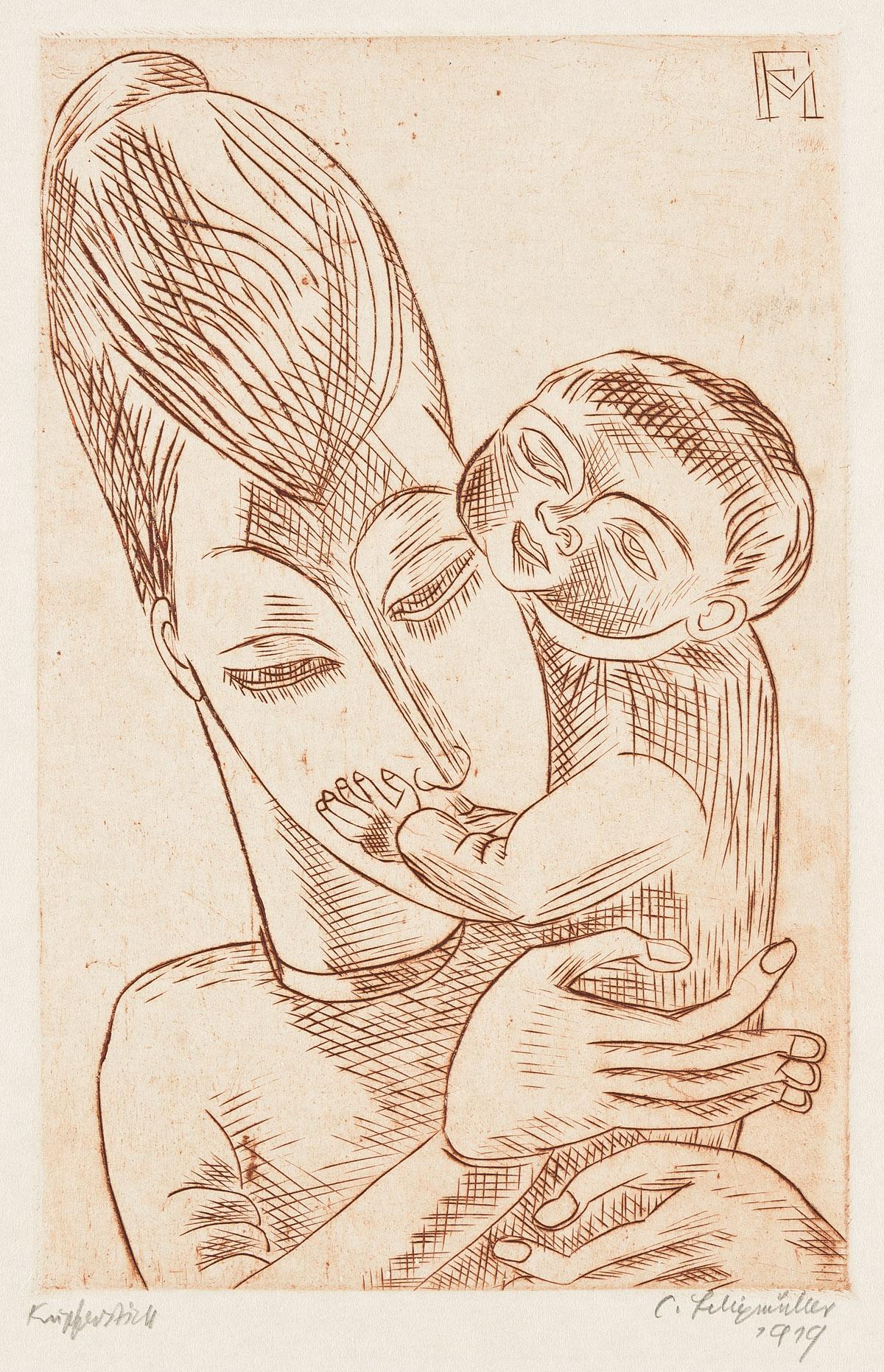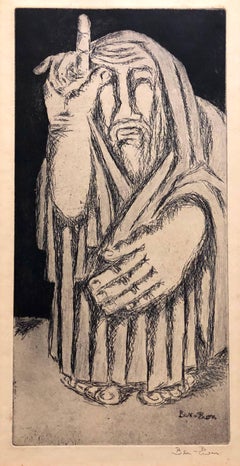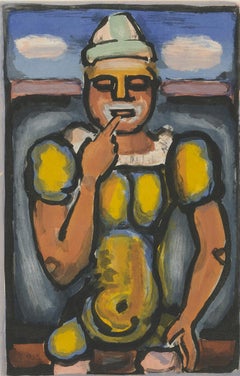Biblical Prophet
View Similar Items
Want more images or videos?
Request additional images or videos from the seller
1 of 6
Ben-Zion WeinmanBiblical Prophet
About the Item
- Creator:Ben-Zion Weinman (1897 - 1987, American)
- Dimensions:Height: 21.25 in (53.98 cm)Width: 13.25 in (33.66 cm)
- Medium:
- Movement & Style:
- Period:
- Condition:
- Gallery Location:Surfside, FL
- Reference Number:1stDibs: LU3821846383
About the Seller
4.9
Platinum Seller
These expertly vetted sellers are 1stDibs' most experienced sellers and are rated highest by our customers.
Established in 1995
1stDibs seller since 2014
1,549 sales on 1stDibs
Typical response time: 1 hour
More From This SellerView All
- Biblical Prophet Etching American Modernist WPA ArtistBy Ben-Zion WeinmanLocated in Surfside, FLBorn in 1897, Ben-Zion Weinman celebrated his European Jewish heritage in his visual works as a sculptor, painter, and printmaker. Influenced by Spinoza, Knut Hamsun, and Wladyslaw Reymont, as well as Hebrew literature, Ben-Zion wrote poetry and essays that, like his visual work, attempt to reveal the deep “connection between man and the divine, and between man and earth.” An emigrant from the Ukraine, he came to the US in 1920. He wrote fairy tales and poems in Hebrew under the name Benzion Weinman, but when he began painting he dropped his last name and hyphenated his first, saying an artist needed only one name. Ben-Zion was a founding member of “The Ten: An Independent Group” The Ten” a 1930’s avant-garde group, Painted on anything handy. Ben-Zion often used cabinet...Category
Mid-20th Century Expressionist Figurative Prints
MaterialsEtching
- Dutch Fantastic Modern Etching, Jan Mensinga Old Master Style Wine Maker, GrapesLocated in Surfside, FLJan Roelf Mensinga, Dutch artist, painter, graphic printmaker, watercolor artist. (born Leeuwarden 1924 - 1998 Amsterdam) Education: Mensinga attended an art studies from 1954 to 1...Category
20th Century Expressionist Figurative Prints
MaterialsEtching
- Biblical ProphetBy Ben-Zion WeinmanLocated in Surfside, FLBorn in 1897, Ben-Zion Weinman celebrated his European Jewish heritage in his visual works as a sculptor, painter, and printmaker. Influenced by Spinoza, Knut Hamsun, and Wladyslaw Reymont, as well as Hebrew literature, Ben-Zion wrote poetry and essays that, like his visual work, attempt to reveal the deep “connection between man and the divine, and between man and earth.” An emigrant from the Ukraine, he came to the US in 1920. He wrote fairy tales and poems in Hebrew under the name Benzion Weinman, but when he began painting he dropped his last name and hyphenated his first, saying an artist needed only one name. Ben-Zion was a founding member of “The Ten: An Independent Group” The Ten” a 1930’s avant-garde group, Painted on anything handy. Ben-Zion often used cabinet doors (panels) in his work. Other members of group included Ilya Bolotowsky, Lee Gatch, Adolf Gottlieb...Category
Mid-20th Century Expressionist Figurative Prints
MaterialsEtching
- Russian Expressionist Artist Flowers EtchingLocated in Surfside, FLWladimir Sagal Witebsk, Weißrußland (Vitebsk, White Russia) Vladimir Sagal-Sagalowitz was born in in Vitebsk (Russia) in 1898. Pogroms forced his fami...Category
Mid-20th Century Expressionist Figurative Prints
MaterialsEtching
- Hungarian Modernist Judaica Etching Print Teffilin, Jewish Rabbi in PrayerBy Janos KassLocated in Surfside, FLFrom very small edition of 15 on handmade mould made paper, with Jewish star Magen David watermark. From the deluxe boxed portfolio edition. Hand signed in pencil. János Kass (December 26, 1927 – March 29, 2010) was a Hungarian illustrator, printmaker, graphic designer, postage stamp designer, animated film director and teacher. Hungary's foremost graphic artist and book illustrator. Born in Szeged, he was the storyboard artist for the first fully digital animated film. This is done in a manner reminiscent of Saul Raskin, Tully Filmus and William Gropper, this is a modern take on a classic judaic subject matter, similar in style and tone to Abram Krol, Jakob Steinhardt, Josef Budko and Hermann Struck. Beginning his artistic studies at the Applied Art Academy, Kass finished in 1951 at the Academy of Fine Arts, a student of Gyula Hincz, György Kádár and György Konecsni. From 1956 to 1959 he held the Derkovits scholarship. From 1961 to 1962, he was assistant professor at the Book-Art Academy in Leipzig, Germany. Kass regularly took part in every major national exhibition at home and abroad. He had one-man shows in Italy (1963), Australia (1970) and Switzerland (1976). He participated in the Venice Biennial (1960), the Youth Biennial in Paris (1961), and Biennials in Lugano, Tokyo, Ljubljana, São Paulo and Buenos Aires, along with "Intergrafik" exhibitions in Berlin. He made many friends within the British graphic art fraternity while spending some months in London during 1980, working on one of the earliest, fully digitized computer-animated films, Dilemma, with John Halas. He had already won recognition with his illustrations and book designs. At the 1973 Leipzig book fair, his work was awarded the title of best illustrated book at the fair. This accolade was repeated at the Frankfurt fair in 1999. The 11-minute Dilemma was nominated at that year's Cannes Film Festival for the Golden Palm for Best Short Film, and is considered the first fully digital animated film. Kass was also a background artist for the "So Beautiful and So Dangerous" segment of Ivan Reitman Productions' 1981 animated feature film Heavy Metal. Kass' drawings, etchings and silk-screen prints were exhibited in the Fitzwilliam Museum in Cambridge in 1989 and in 1990 at London Olympia. He later held a one-man show in Edinburgh. He illustrated something like 400 books, classical novels and children's stories, among them an elegant edition of Imre Madách's 19th-century drama The Tragedy of Man, published in Iain MacLeod's translation by Edinburgh's Canongate press in 1993. He won Hungary's highest artistic award, the Kossuth prize, and was an elected member of the Széchenyi academy. János Kass’ s numerous works can be found in the Hungarian National Gallery. Since 1985, the János Kass Gallery...Category
1990s Expressionist Figurative Prints
MaterialsEtching
- Hungarian Modernist Judaica Etching Print Kiddush, Jewish Rabbi at Shabbat FeastBy Janos KassLocated in Surfside, FLFrom very small edition of 15 on handmade mould made paper, with Jewish star Magen David watermark. From the deluxe boxed portfolio edition. János Kass (...Category
1990s Expressionist Figurative Prints
MaterialsEtching
You May Also Like
- Girls Walking State 3By Lester JohnsonLocated in New York, NYLester Johnson Girls Walking State 3 etching 1986. Designated edition number 8 of 21 in pencil lower left recto. Signed in pencil "Lester Johnson" lower right recto.Category
1980s Expressionist Figurative Prints
MaterialsEtching, Aquatint, Intaglio
$1,440 Sale Price20% Off - Dors Mon AmourBy Georges RouaultLocated in Irvine, CAThis is an aquatint print by French painter Georges Rouault titled "Dors mon amour" ("Sleep, My Love") (plate facing page 164) from Cirque de l'étoile filante (The Shooting Star Circ...Category
1930s Expressionist Figurative Prints
MaterialsAquatint
- Le RencheriBy Georges RouaultLocated in Irvine, CAThis is an aquatint print by French painter Georges Rouault titled "Le Rencheri" from Cirque de l'étoile filante (The Shooting Star Circus) 1935, published 1938 by Ambroise Vollard....Category
1930s Expressionist Figurative Prints
MaterialsAquatint
- Rudolf v. Rittner as Florian Geyer - Last man standing -By Lovis CorinthLocated in Berlin, DELovis Corinth (1858 Tapiau - 1925 Zandvoort), Rudolf von Rittner as Florian Geyer, 1924 (Müller 854), drypoint signed in pencil. 20.4 × 14.2 (plate size), 37.7 × 30.6 cm (sheet size). Published by Karl Nierendorf, Berlin. Framed in a passepartout. - Strong, precise impression. Frame a little bit rubbed and with two small damages. About the artwork The knight is a leitmotif in Lovis Corinth's work, culminating in his Self-Portrait in Armour of 1914. Of all the paintings on this theme, Corinth most often depicted Florian Geyer. Descended from a Franconian noble family, he fought for the freedom of the peasants during the peasant wars of the Reformation, first diplomatically and then militarily, leading the legendary Schwarzen Haufen (Black Troops). The name derives from the black uniforms with which Geyer dressed the peasants willing to fight. During the Napoleonic occupation, the freedom fighter Florian Geyer was sung about by the Romantics, and the free corps Die Schwarze Schaar, founded in 1813 by Major von Lützow, succeeded the Schwarzer Haufen. It was against this historical background that Gerhard Hauptmann wrote the revolutionary drama Florian Geyer, which premiered at the Deutsches Theater in Berlin in 1896. While the actor Rudolf Rittner, who would later appear in Fritz Lang's films, initially played the role of Schäferhans, he took over the leading role in the new production at Berlin's Lessing Theatre in 1904, again directed by Emil Lessing, which established his fame as an actor. Hauptmann himself praised the acting. He wrote to Hugo von Hofmannsthal: "It went quite well with Florian Geyer. In any case, I had the great pleasure of seeing the play again in an admirable performance". And Lovis Corinth was so taken with Rittner's performance that he painted an oil portrait of him in the role of Florian Geyer in 1906. After two further graphic versions in 1915 and 1920/21, Corinth returned to the painting a year before his death and almost twenty years after the oil painting to create this graphic version in 1924. Even the inscription in the picture was taken over. This proves all the more the importance of the knight and freedom fighter for Corinth's self-image. The oil painting, in particular, proclaims the single-minded determination to fight to the last for the values defended, manifested in the oil painting by the tattered flag held out to the enemy. There is a parallel with Rainer Maria Rilke's 1899 story The Cornet, in which the protagonist goes down with the flag that he first saved at the risk of his life. Consequently, the portrait is also a self-portrait, and the knight's armour is not an academic costume or an ironic refraction, but an expression of Corinth's self-image, which also includes his self-representation as an artist. The Secession poster...Category
1920s Expressionist Figurative Prints
MaterialsEtching
$836 Sale Price20% OffFree Shipping - Trichromatic Flower-piece, Richard Hamilton multi color flower still lifeBy Richard HamiltonLocated in New York, NYAccording to Gesine Tosin, Richard Hamilton irritated contemporary critics in the 1970s with a series of works -- romantic images of flowers, still lifes and landscapes, interspersed with scatological motifs. "Once exhibited, the critics regarded the paintings as evidence either of a kinky sexual aberration or an early onset of senility." (Hamilton 1982, p.79. ) Trichromatic flower-piece is one of these works, which questioned the categories of high and low art through its appropriated imagery. In the words of Richard Hamilton: “The Shit and Flowers series was was inspired in a sense by Barcelona, walking on the Ramblas where thousands of postcards are displayed. (…) I bought three pictures of flowers. I took them back to Cadaqués and began to play about with them, at first by putting a little paint on the surface.” According to Andrew Kim Tyler: “Working at Atelier Crommelynck, Paris in 1973-4, Hamilton used a traditional still life subject, a bouquet of flowers, to pursue his interest in the combination of photographic images with planes of color and hand-drawn aspects, but subverting the image with addition of a large turd. Perversely he set out to produce by manual means an etching with the characteristics of a commercially made reproduction resulting in Trichromatic flower-piece.” In addition to the edition of Trichromatic Flower-piece, Hamilton printed...Category
1970s Expressionist Figurative Prints
MaterialsEngraving, Drypoint, Etching, Aquatint
- Ducks Quacking, Cactus Peeking, linear style, monochromaticBy Jenny TothLocated in Brooklyn, NYThis is an artist proof aquatint of a woman peeking around a cactus with ducks mysteriously hovering in the upper right corner and a giant beautiful cactus overgrowing. The mood is ...Category
2010s Expressionist Figurative Prints
MaterialsPaper, Ink, Archival Ink, Aquatint
